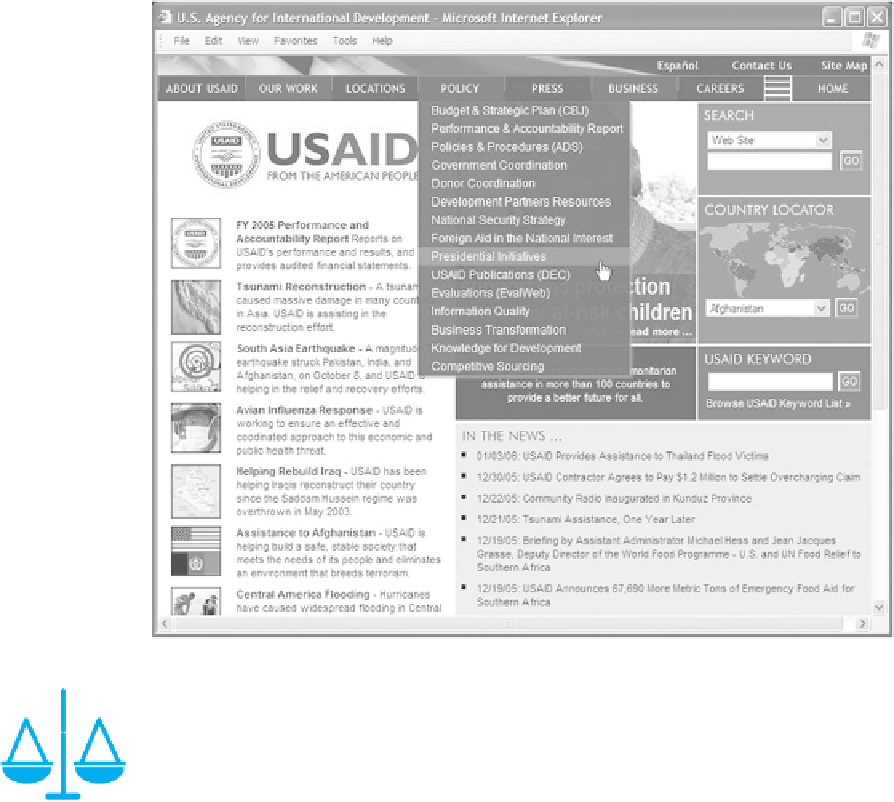HTML and CSS Reference
In-Depth Information
Figure 11.18
This Web site uses
DHTML navigation
As you visit these and other DHTML resource sites, remember that some may be copy-
righted. Be sure to obtain permission from the creator of the DHTML before using it
on your site and follow any instructions for giving credit to the source. Some sites allow
personal use of their DHTML free of charge but require licenses for commercial use.
Focus on Ethics
If you choose to use free DHTML, be very careful about which browsers it is meant to
work with. Some sites clearly indicate the browsers supported by each DHTML effect,
such as dynamicdrive.com. Other sites, such as brainjar.com, contain code that is meant
to work in the newer releases of browsers only and is not backward compatible to
Netscape 4.x. Testing is crucial when you are using DHTML.
Focus on Accessibility
Also, always offer your visitors an alternate method in case the DHTML does not
work. For example, if you use DHTML for a navigation bar, offer plain text navigation
at the bottom of the page.
WWW
Ajax, like DHTML, is not a single technology, but a combination of different technolo-
gies. Ajax stands for Asynchronous JavaScript and XML. These technologies are not
new, but recently have been used together to provide a better experience for Web visi-
tors and create interactive Web applications. Jesse James Garrett of Adaptive Path
(
http://www.adaptivepath.com/publications/essays/archives/000385.php)
is credited with
coining the term “Ajax.” The technologies utilized in Ajax are listed below:
●
Standards-based XHTML and CSS
●
Document Object Model




Search WWH ::

Custom Search